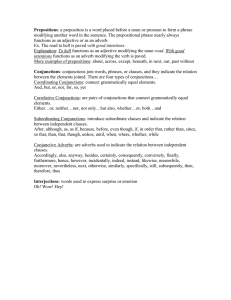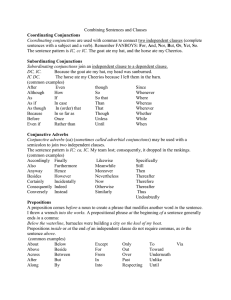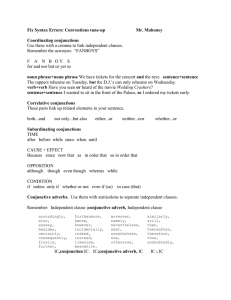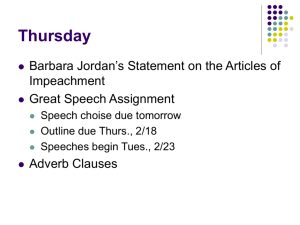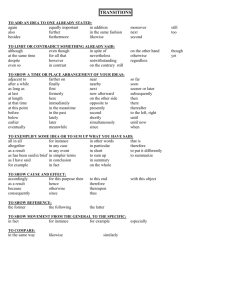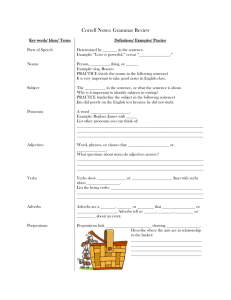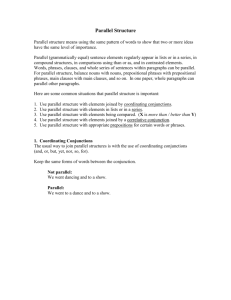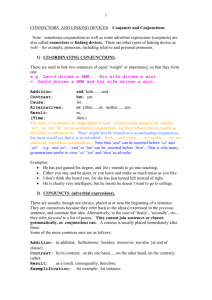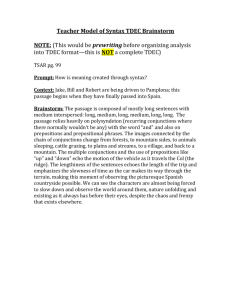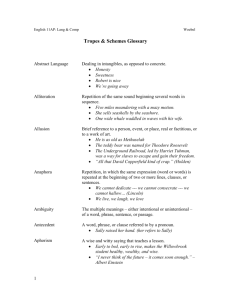Prepositions: a preposition is a word placed before a noun or
advertisement
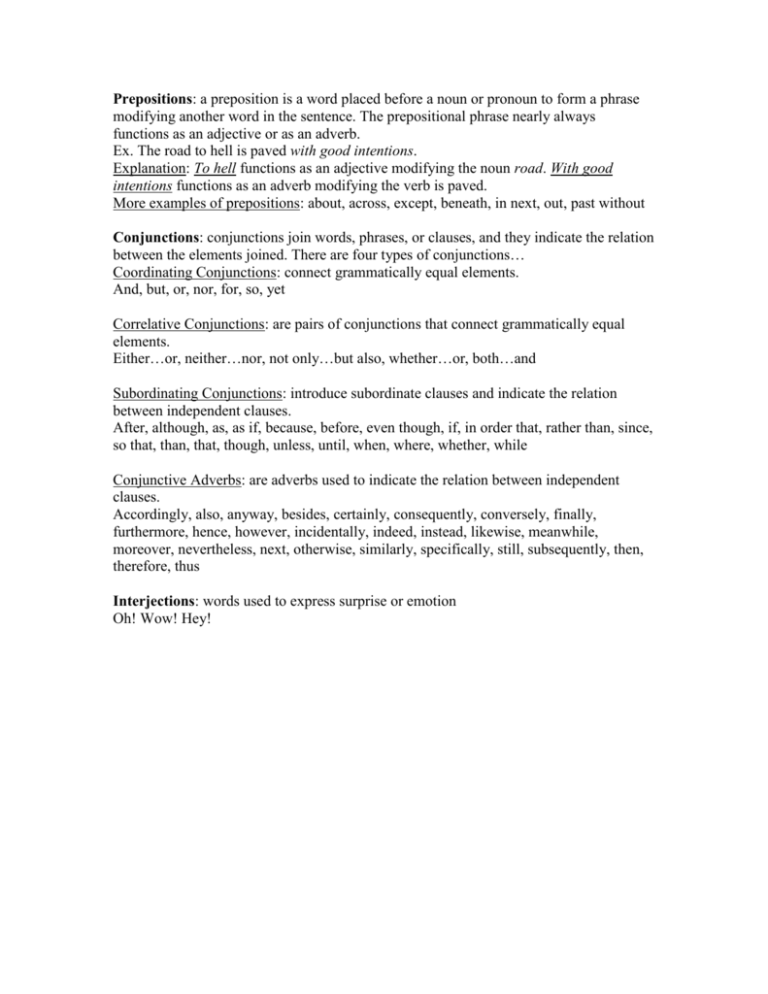
Prepositions: a preposition is a word placed before a noun or pronoun to form a phrase modifying another word in the sentence. The prepositional phrase nearly always functions as an adjective or as an adverb. Ex. The road to hell is paved with good intentions. Explanation: To hell functions as an adjective modifying the noun road. With good intentions functions as an adverb modifying the verb is paved. More examples of prepositions: about, across, except, beneath, in next, out, past without Conjunctions: conjunctions join words, phrases, or clauses, and they indicate the relation between the elements joined. There are four types of conjunctions… Coordinating Conjunctions: connect grammatically equal elements. And, but, or, nor, for, so, yet Correlative Conjunctions: are pairs of conjunctions that connect grammatically equal elements. Either…or, neither…nor, not only…but also, whether…or, both…and Subordinating Conjunctions: introduce subordinate clauses and indicate the relation between independent clauses. After, although, as, as if, because, before, even though, if, in order that, rather than, since, so that, than, that, though, unless, until, when, where, whether, while Conjunctive Adverbs: are adverbs used to indicate the relation between independent clauses. Accordingly, also, anyway, besides, certainly, consequently, conversely, finally, furthermore, hence, however, incidentally, indeed, instead, likewise, meanwhile, moreover, nevertheless, next, otherwise, similarly, specifically, still, subsequently, then, therefore, thus Interjections: words used to express surprise or emotion Oh! Wow! Hey!
